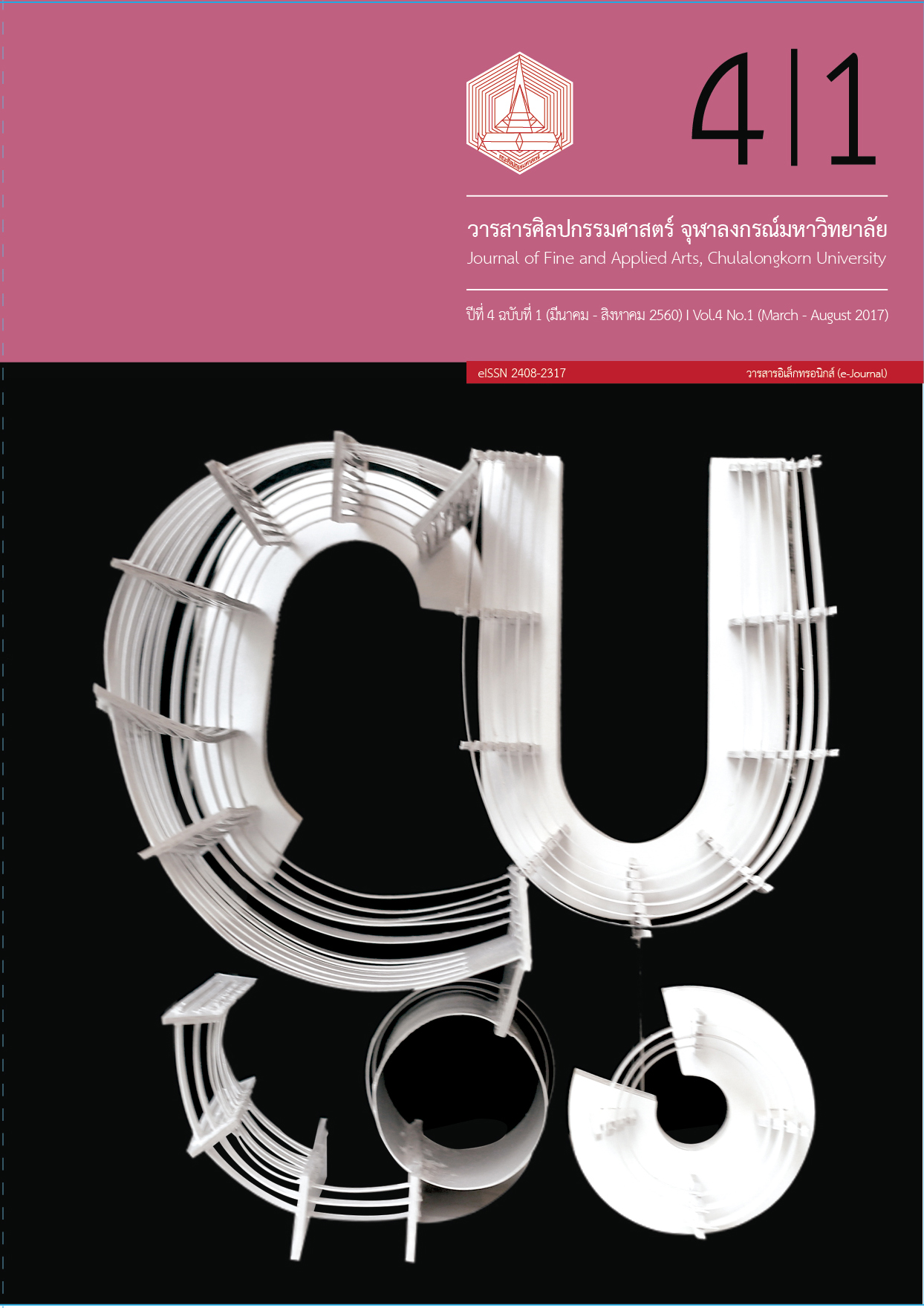การร้อยเรียงสอดทำนองซออู้
Keywords:
การสอดทำนองซออู้, การผูกสำนวนกลอน, การแปรทำนอง, Saw-U Counterpoint, Creating Melodic Phrase, Variation-MakingAbstract
บทคัดย่อ
บทความนี้มีวัตถุประสงค์เพื่อนำเสนอแนวทางที่เกี่ยวข้องกับหลักปฏิบัติในการผูกสำนวนกลอนสำหรับซออู้ผู้บรรเลงจะต้องใช้สติปัญญาสร้างทำนองที่มีความพิศวงน่าทึ่ง โดยการหยอกล้อ เย้าแหย่ อย่างมีเสน่ห์ การร้อยเรียงสอดทำนองสามารถปฏิบัติได้ทั้งในเพลงประเภททางพื้นและทางกรอ ลักษณะสำนวนกลอนที่ปรากฏในซออู้โดยทั่วไป ได้แก่ กลอนฝาก กลอนพัน กลอนไล่เสียงขึ้น-ลง การผูกสำนวนกลอนซออู้จำเป็นต้องสร้างความโดนเด่นแตกต่างกันออกไปตามรูปแบบของการประสมวง ลีลาการผูกสำนวนกลอนซออู้ที่ปรากฏเป็นหลักมี 3 ประการ คือ 1) ทำนองล่วงหน้า 2) ทำนองล้าหลัง 3) ทำนองอิหลักอิเหลื่อ การผูกสำนวนกลอนที่ดีต้องรู้และเข้าถึงความงามอันมีดุลยภาพและมีความกลมกลืน ผู้ที่จะสามารถผูกสำนวนกลอนได้อย่างมีปฏิภาณ และชั้นเชิงชนิดที่เรียกว่า “รู้พลัน รู้กระจ่างเหมือนสายฟ้าฟาด” จำต้องผ่านตาดู หูฟัง และนำประสบการณ์การบรรเลงที่ได้รับการสั่งสมมาทั้งสิ้นนั้นมาประยุกต์และปรับใช้ให้เข้ากับกาลเทศะ
Abstract
This article offers the principles of conduct in creating melodic phrases for Saw-U. Performers must use their intelligence to produce the sublime melodic phrases, making them pleasant and attractive, creating both counterpoints in Thang Pean Melody and Thang Kraw Melody. Ordinarily, the melodic phrases in Saw-U are Klon Faak (Goal-delayed melodic phrases), Klon Pan (Complex melodic phrases) and Klon Lai Siang Kuen-Long (Way up and down passage of melodic phrases). Depending on the ensemble formation, creating variation across these phrases can produce outstanding results. Essentially, three methods are used in creating the melodic phrases for Saw-U: Firstly, Luang Naa (Anticipation), second, La Lung (Retardation), and thirdly, I-lak I-leua (Syncopation). The aesthetic elements combine with the equilibrium and harmonies to make impressive melodic phrases. The musicians, would gain access to the impromptu and diplomatic ability as “strike the glorious lightning of the instantaneous enlightenment,” (Intuitive-Cognitive-Thoroughness) should cultivate their experiences through their visual and auditory senses. They would apply their cultivated experiences according to the occasion.
Downloads
Additional Files
Published
Issue
Section
License
ลิขสิทธิ์ของบทความเป็นของเจ้าของบทความ บทความที่ได้รับการตีพิมพ์ถือเป็นทัศนะของผู้เขียน
กองบรรณาธิการไม่จำเป็นต้องเห็นด้วยและไม่รับผิดชอบต่อบทความนั้น






